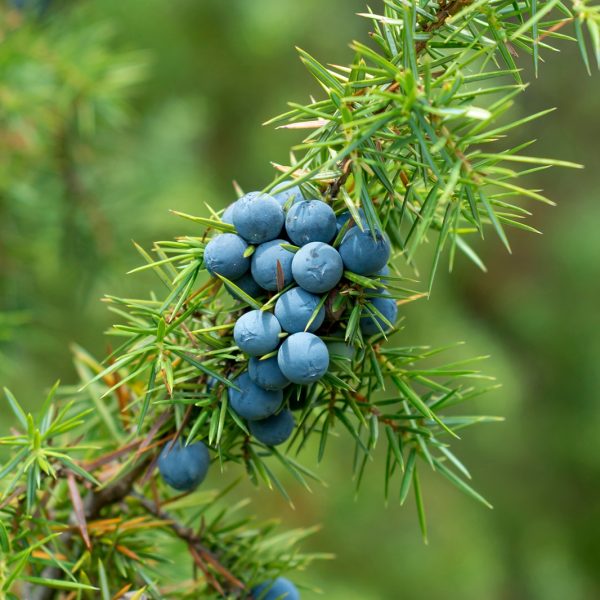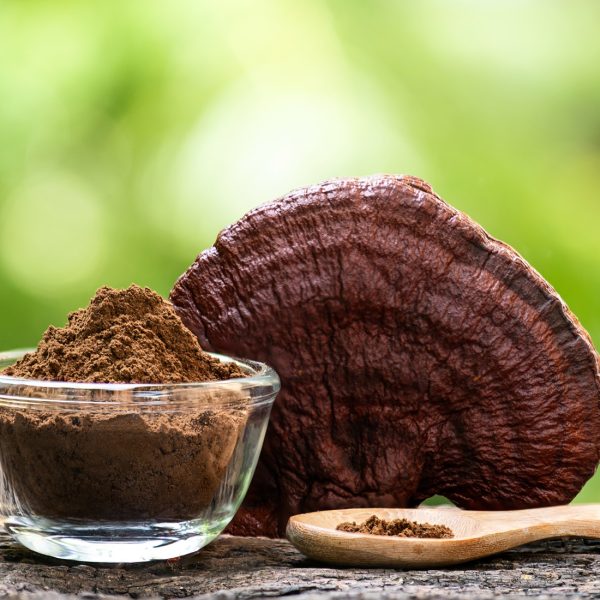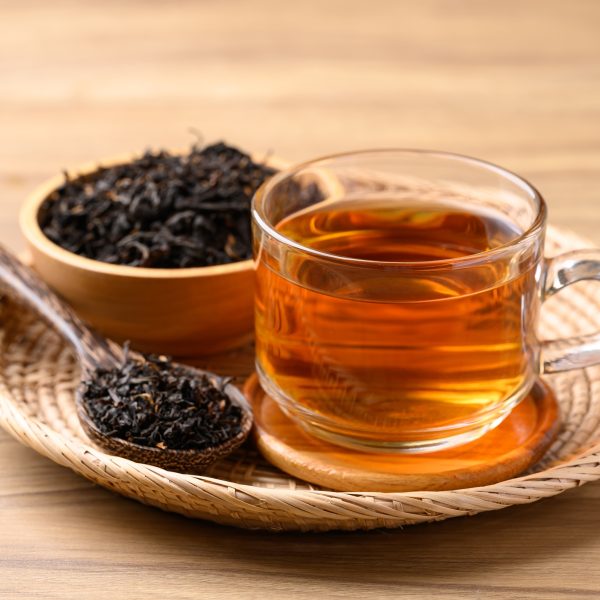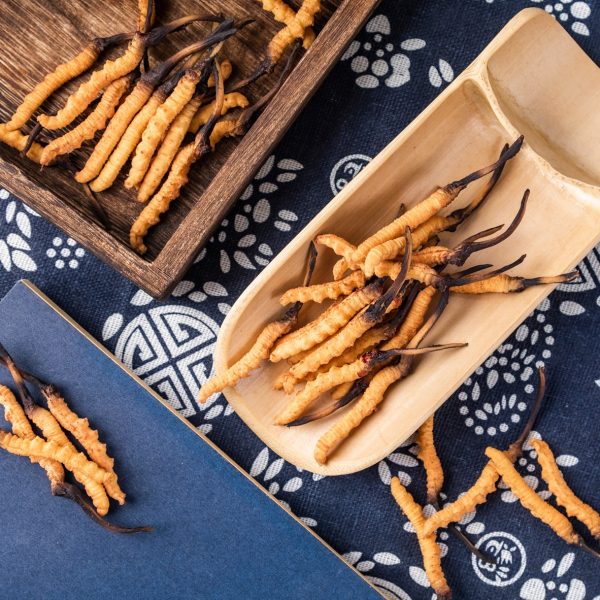Opioid drugs are effective analgesia for acute conditions, yet bring risk of tolerance and dependency from long-term use. What does herbal medicine have to offer in the treatment of chronic pain?
The overuse of opioids in treating chronic non-cancer pain is a growing concern worldwide, particularly in the United Kingdom (12). The NHS England Medicines Optimisation Executive Group (MOEG) has identified reducing opioid use in this context as a key national priority for 2023/24 (3). Chronic non-cancer pain*, affecting millions in the UK, is often managed through opioids despite their limited efficacy and significant risk of dependence, tolerance, and other adverse effects (2,4). There is a potential role for herbal medicine to help reduce opioid use, thus supporting doctors in pain management.
*Throughout this article, when discussing “chronic pain”, we are referring to chronic non-cancer pain (CNCP).
The opioid crisis in the UK and its challenges

Opioids, including tramadol, morphine, oxycodone, and fentanyl, are commonly prescribed for chronic pain. However, there is growing evidence that they are not particularly effective for long-term pain management in non-cancer patients (4,5,6). A systematic review highlighted that opioids provide only modest pain relief and little improvement in function for chronic pain patients, often leading to significant adverse effects, such as gastrointestinal issues, dizziness, and, most critically, dependency and addiction (4). In the UK, the Office for National Statistics (ONS) reported over 4,000 deaths related to opioid use in 2022 alone, underscoring the urgent need for safer pain management strategies (7).
Furthermore, the pharmacological treatment of chronic pain offers limited benefits and may pose potential risks, especially when compared to effective biopsychosocial interventions. The evidence supporting the use of strong opioids for chronic pain is inadequate to justify their use for this purpose (6). However, it is recognised that due to dependency, many individuals may struggle to discontinue these medications.
Given these challenges, the NHS Medicines Optimisation Executive Group has prioritised reducing opioid use to treat chronic pain. Traditional pharmacological interventions often fall short of providing long-term relief, prompting a growing interest in integrative approaches, including the use of herbal medicine (8).
The role of herbal medicine in pain management
Medical herbalists can support doctors in addressing opiate overprescribing. There are many herbs and medicinal plants with a range of phytochemicals with analgesic, anti-inflammatory, and anxiolytic properties that can help reduce pain levels. Many herbs have been studied for their potential to manage pain and reduce the need for opioids, including turmeric, willow and ginger.

Willow (Salix alba)
The bark of the willow tree contains salicin, a precursor to salicylic acid, which has anti-inflammatory and analgesic effects. Salicylic acid found in willow bark and other medicinal plants like black cohosh and meadowsweet, was refined to produce aspirin (9). Salicylic acid inhibits prostaglandin, which are pro-inflammatory molecules that cause pain. A clinical study demonstrated that willow bark extract was as effective as standard doses of rofecoxib (a prostaglandin COX-2 inhibitor) in reducing pain in patients with osteoarthritis and lower back pain (10). Unlike conventional NSAIDs, willow bark is less likely to cause gastrointestinal irritation, making it a suitable long-term option for chronic pain management.
Turmeric (Curcuma longa)
Curcumin, the active compound in turmeric, has demonstrated potent anti-inflammatory and analgesic properties. A meta-analysis found that curcumin supplementation significantly reduced pain levels in patients with osteoarthritis, a common cause of chronic pain (11). Moreover, curcumin’s mechanism of action involves downregulating pro-inflammatory cytokines (e.g., TNF-α, IL-6) and inhibiting the COX-2 enzyme, which is also targeted by non-steroidal anti-inflammatory drugs (NSAIDs) like ibuprofen and diclofenac (12). This suggests that turmeric could be a viable alternative or adjunct to NSAIDs and opioids, potentially reducing opioid dosages and dependency risks. It is recommended to use the whole extract of turmeric, standardised to contain a minimum amount of curcuminoids including curcumin. The synergistic value of the whole extract can be more effective in pain treatment than curcumin-only products. Turmeric gets better absorbed when combined with black pepper or if using the powder when taking alongside fatty solvents, like coconut milk.
Ginger (Zingiber officinale)
Ginger is a powerful anti-inflammatory medicinal plant that can be very helpful in pain management, especially when used in combination with other analgesic, anti-inflammatory plants like turmeric and frankincense (9). Gingerols are the main active constituent group of ginger. They have potent inhibitory effects on pro-inflammatory prostaglandins like COX-1 and COX-2. Ginger also blocks the production of other pro-inflammatory cytokines that cause pain, and it has been shown to lower osteoarthritic and arthritic pain (13).
For the following two herbs, frankincense and devil’s claw, though we share wisdom about their analgesic properties and their value in herbal medicine, we cannot recommend their use due to the sustainability issues that these plants are now facing.

Frankincense (Boswellia serrata)
The resin from Boswellia species has been used as incense in religious and cultural ceremonies for thousands of years. Boswellia serrata, also known as salai guggul or frankincense grows in mountainous regions of India, Northern Africa, and the Middle East (14). The oleo-gum resin extracted from this tree consists of 30–60% resin, 5–10% essential oils (soluble in organic solvents), and the remainder is made up of polysaccharides. The gum resin has been used for centuries in folk medicine to treat various chronic inflammatory conditions (14). The main active constituents are the triterpene boswellic acids, which have been shown to inhibit pro-inflammatory enzymes. Among them, boswellic acid is the most powerful inhibitor of 5-lipoxygenase, an enzyme that plays a key role in inflammation and pain. In a meta-analysis including seven clinical trials involving 545 patients, Boswellia was shown to decrease pain levels and stiffness and improving joint function (15).
Frankincense is a herb that has been excessively exploited, to the detriment of its wild populations and the communities that live and work with this herb, not for it’s medicinal use but owing to its popularity as an ingredient in the cosmetics industry. Consequently, this herb is facing near extinction and its use should be avoided. The only way to source frankincense from a sustainable supply that protects both plant and people is FairWild certification — they have five certified suppliers across Kenya, Somalia, and India.
Devil’s claw (Harpagophytum procumbens)
Traditionally used in African medicine, devil’s claw has demonstrated analgesic and anti-inflammatory effects, particularly for musculoskeletal pain. Devil’s claw has been shown to be effective in the treatment of chronic lower back pain that was not due to spinal nerve irritation (9). A review found that devil’s claw was effective in reducing pain and improving mobility in patients with osteoarthritis, suggesting its potential role in managing inflammatory chronic pain without the adverse effects associated with long-term opioid use (16). Although devil’s claw is an effective herb for pain relief, it is critically endangered, so we do not recommend its use. We implore you to read more about the sustainability issues that devil’s claw faces and to seek alternatives until populations have recovered and there is a certified guarantee of sustainable harvest.
Herbal self-care practices
These are some ideas to manage pain at home, that can be used on a regular basis to reduce overall levels of inflammation, anxiety and/or muscle tension.
- Magnesium bath using magnesium salts to ease muscle tension
- A recipe for an analgesic oil
- 100 ml St John’s wort infused oil
- 10 drops wintergreen essential oil — wintergreen is a shrub contains methyl salicylate, a compound with strong analgesic, anti-inflammatory and antispasmodic properties.
- 10 drops Peppermint essential oil
- Lavander-based products: They can be used externally for rheumatism, muscle pain or nerve-related pain. The smell of the essential oil can directly affect the nervous system and can help ease headaches.
- Essential oils/aromatherapy: The use of essential oils can be very beneficial for pain management. Do not use essential oils neat on the skin or mucosal surfaces unless advised by a professional. Seeking advice from a professional aromatherapist is valuable, as they can provide guidance on safety and best practice.
Integrating herbal medicine into pain management strategies
It would be ideal to integrate herbal medicine into mainstream pain management strategies. This would require a multidisciplinary approach involving collaboration between doctors, pharmacists, herbalists, patients and other integrative medicine practitioners.
There is evidence on the analgesic properties of certain herbs, and there is evidence coming from traditional use, yet more research could further consolidate the safety and efficacy of these medicinal plants. The NHS could support, or fund research initiatives focused on herbal medicine, enabling herbal medicine to be used concomitantly with pharmacological therapies.
A patient-centred approach is crucial, considering patient preferences, beliefs, and individual responses to treatment. By discussing herbal options as part of a broader pain management plan, or referring them to a qualified herbalist, doctors can empower patients to make informed choices and enhance adherence to treatment.
Herbal medicine has the potential to reduce opioid use in managing chronic non-cancer pain. By providing effective, safer alternatives or adjuncts to opioids, medical herbalists and herbs like ginger, turmeric or willow bark could support doctors in offering holistic, patient-centred care. A strategic approach, involving education, research, patient-centred care, and collaboration between healthcare professionals (doctors and herbalists alike) is essential to integrate herbal medicine into pain management practices, ultimately enhancing patient outcomes and reducing the risks associated with opioid use.
References
- Jayawardana S, Forman R, Johnston-Webber C, et al. Global consumption of prescription opioid analgesics between 2009–2019: a country-level observational study. EClinicalMedicine 2021; 42: 101198
- Roberts, Antonia-Olivia, and Georgia C. Richards. “Is England facing an opioid epidemic?.” British journal of pain 17.3 (2023): 320-324.
- England, N. H. S. “National medicines optimisation opportunities 2023/24 [online]. 2023.”: https://www.england.nhs.uk/long-read/national-medicines-optimisation-opportunities-2023-24/
- Busse, J. W., et al. (2018). Opioids for Chronic Noncancer Pain: A Systematic Review and Meta-Analysis. *JAMA, 320*(23), 2448-2460.
- Furlan A, Chaparro LE, Irvin E, Mailis-Gagnon A. A comparison between enriched and nonenriched enrollment randomized withdrawal trials of opioids for chronic noncancer pain. Pain Res Manag 2011;16:337–351
- Trescot, Andrea M., et al. “Effectiveness of opioids in the treatment of chronic non-cancer pain.” Pain physician 11.2S (2008): S181.
- Breen, Paul, and Beth Manders. “Deaths related to drug poisoning in England and Wales: 2020 registrations.” Off Natl Stat (2021).
- Hu, Wen-Long, et al. “Herbal Medicines in Pain Management.” Frontiers in Pharmacology 13 (2022): 955743.
- Fisher, Carole. Materia medica of Western herbs. Aeon Books, 2018.
- Brien, S., Lewith, G., & McGregor, G. (2006). Devil’s Claw (Harpagophytum procumbens) for osteoarthritis and low back pain: A systematic review. *BMC Complementary and Alternative Medicine, 6*(1), 13.
- van Breemen, Richard B., Yi Tao, and Wenkui Li. “Cyclooxygenase-2 inhibitors in ginger (Zingiber officinale).” Fitoterapia 82.1 (2011): 38-43.
- (14)Siddiqui, Mahtab Z. “Boswellia serrata, a potential antiinflammatory agent: an overview.” Indian journal of pharmaceutical sciences 73.3 (2011): 255.
- Yu, G., Xiang, W., Zhang, T., Zeng, L., Yang, K., and Li, J. (2020). Effectiveness of Boswellia and Boswellia extract for osteoarthritis patients: a systematic review and meta-analysis. BMC Complement. Med. Ther. 20, 225
- Daily, J. W., Yang, M., & Park, S. (2016). Efficacy of turmeric extracts and curcumin for alleviating the symptoms of joint arthritis: a systematic review and meta-analysis of randomized clinical trials. *Journal of Medicinal Food, 19*(8), 717-729.
- Rudrapal, Mithun, et al. “Dual synergistic inhibition of COX and LOX by potential chemicals from Indian daily spices investigated through detailed computational studies.” Scientific Reports 13.1 (2023): 8656.
- Chrubasik, S., Pittler, M. H., & Roufogalis, B. D. (2000). Willow bark for pain relief: A systematic review. *The American Journal of Medicine, 109*(9), 1-9.
































